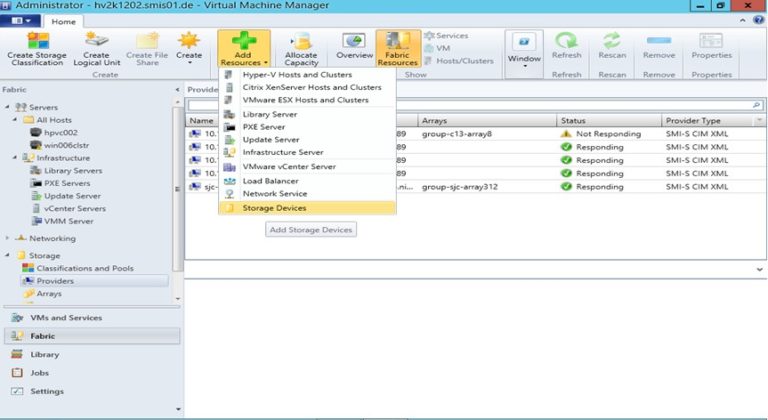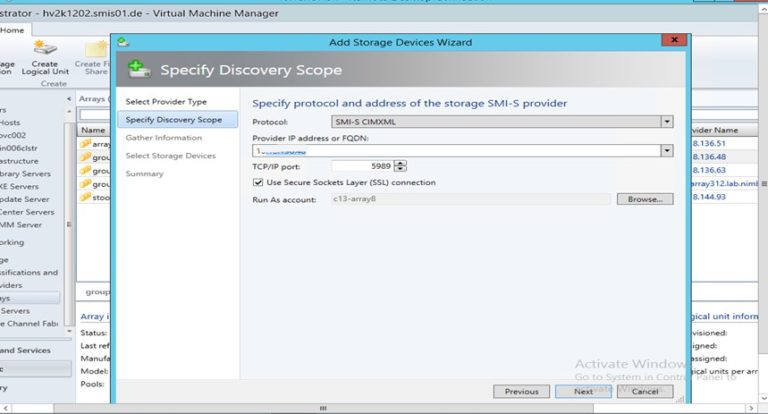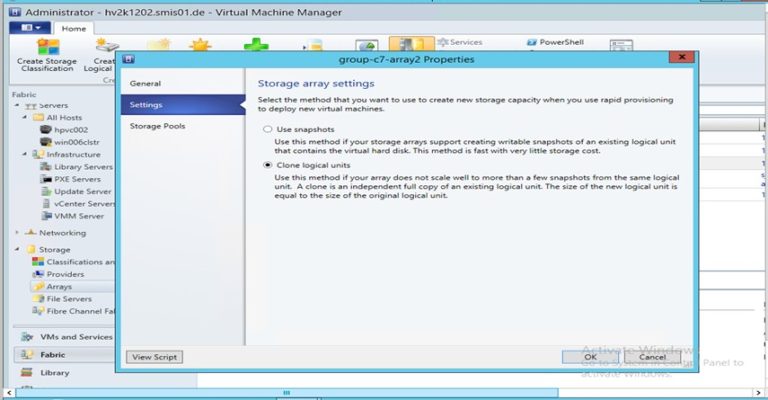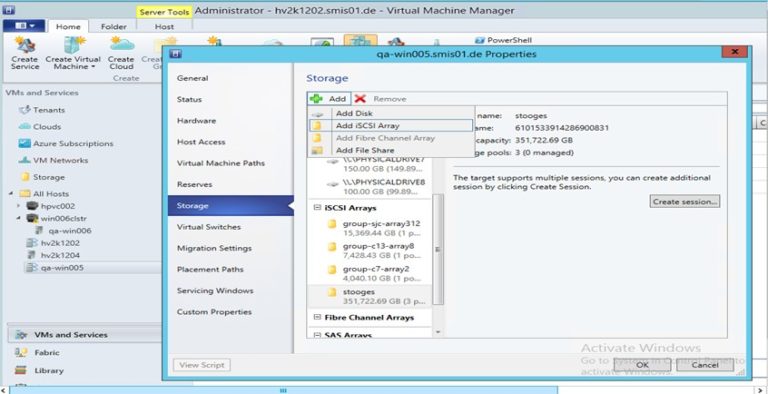How to Achieve Rapid Deployment of Virtual Machines Using SAN Copy Technology?

Audio : Listen to This Blog.
Introduction
Deployment of virtual machines from template over the network, consumes more time to build environment and utilizes huge amount of resources to build the datacenter infrastructure.
Challenges involved in deploying VM over the network:
-
- Time consuming task
- Consumes huge server resources like RAM, CPU, and Memory etc.
- Involves heavy IO traffic
To address these challenges, Microsoft introduce the technology called SCVMM Rapid Provisioning, which delivers capabilities, adaptive-performance with high availability, capacity savings and efficient data protection with limited time using SAN copy capable Virtual Hard Disk (VHD).
Advantages of rapid provisioning using SAN-copy:
- Quick VM Deployment
- Use data transfer within storage subsystem (SAN Box)
- Less Server/Hardware utilization
Description
SCVMM Rapid provisioning provides a method for deploying new virtual machines to storage arrays without the requirement for copying virtual machines over the network. SCVMM enables to take advantage of storage area network (SAN) infrastructure for cloning the virtual machines, and use the VM template to customize the guest operating system.
Rapid provisioning can be achieved by either of the following technique:
- Cloning
SAN Capable source VM or Template cloning is performed using snapshot-based clone copies. This operation can be performed at volume level. Typically VHD will be residing on the source volume. Snapshot of the source volume will be created, once we deploy the VM. - Snapshot
SAN Capable source VM or Template cloning is performed using SAN volume Snapshot copies. This operation can be performed at block level and only uses storage capacity as “blocks change” on the originating volume. Snapshot of the source volume will be created, once we deploy the VM.
Step by step procedure for creating SAN-capable VHD with Rapid Provisioning clone technique:
Rapid Provisioning using SAN Copy:
Creation of new virtual machine using the SAN copy-capable template, SCVMM quickly creates a read-write copy of the logical unit that contains the virtual hard disk (VHD), and places the virtual machine files on the new logical unit. Deploying the virtual machine by using rapid provisioning through SAN copy, SCVMM uses a SAN transfer instead of a network transfer.
SAN transfer performs the SAN copy of the logical unit that contains the virtual machine is created and assigned the copied LUN to the destination host or host cluster. Here the files of the virtual machine are not actually moved over the network, it resides on the Storage Subsystem, where the source LUN resides. Hence this operation is much faster than a transfer over a standard network.
High Level Steps/Process to be followed in SCVMM:
1.Navigate to Add Resources in SCVMM Tool bar to add the storage provider

2.Add the storage provider using below type
SAN and NAS devices are discovered and managed by a SMI-S provider

3.Select the pool of the array and the host groups

4.Once the storage is added successfully, navigate to ‘Arrays’ to select the method (Snapshot / Clone ) to be used for rapid provisioning. Set array to use clone for deploying VM


5.Add the iscsi session and create a volume to particular host.
Create a logical unit from a storage pool managed by VMM and allocate it to the host group(where the library server resides). Assign the logical unit to the library server.


6.Map the volume to the host by creating mount point.
On the library server, mount the logical unit to a folder path in the library share.

7.Create a virtual hard disk on the ‘mount-point’ in hyper-v.
8.Add library server of host in scvmm. Once it is added , add the library share (mount point – where VHDx resides)

9.Create a SAN-copy capable template by using the virtual hard disk file.
VMM creates a clone of the logical unit, which automatically creates a new logical unit from the storage pool. VMM automatically unmasks the new logical unit to the host.
While deploying vm ensure that template is in ‘san-copy capable’



Conclusion:
Rapid provisioning through SAN copy enables quick virtual machines creation from a SAN copy-capable template, which is much faster than traditional VM creation. MSys Technologies has been offering top notch SAN storage solutions, vouched by its leading ISV and Enterprise clientele. If you think, you require help, do contact us today.
